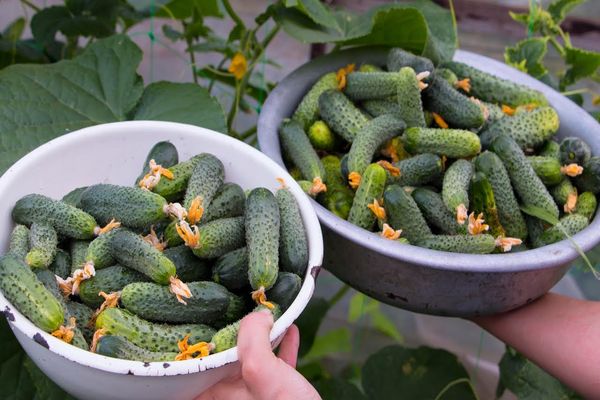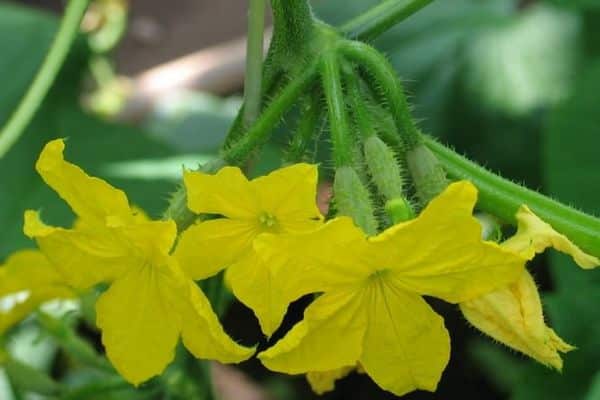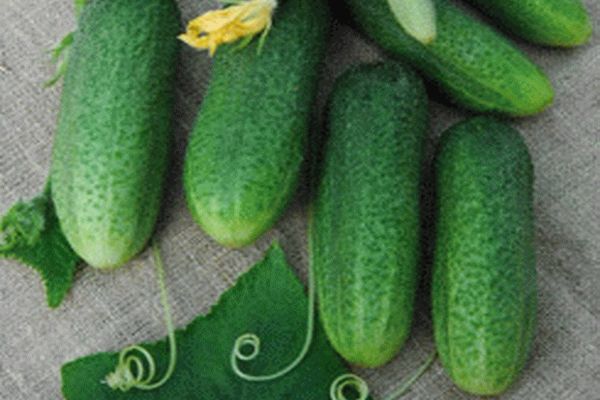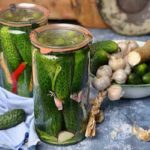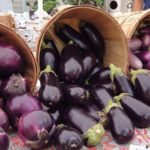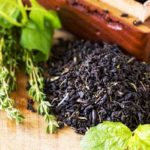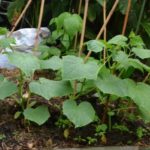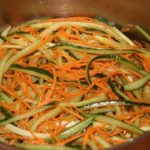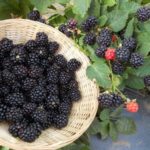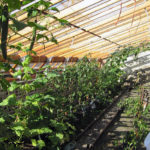The crop is no less popular on the site than tomatoes and peppers. The characteristics of the hybrid are only positive, both from the manufacturer and from vegetable growers. Dolomite is an unpretentious cucumber that easily adapts to climate change.
Plant criteria
Description of Dolomite F1 cucumbers helps the summer resident to correctly place the plant on the site and avoid common mistakes when growing.
Plant:
- Parthenocarpic.
- Indeterminate.
- Medium height.
- Medium branched.
- The ovaries are bunched. There are 6-8 cucumbers in 1 bosom.
- Predominantly female type of flower.
- Ripens within 38-40 days.
Cucumber:
- Color: green with white stripes.
- Spikes: white.
- Length 10-14 cm.
- Diameter: 3.5-4 cm
- Weight: 100 g.
- Taste: excellent, not bitter.
- Density: medium.
- The skin is thin.
The Dutch variety of cucumbers is currently gaining popularity, thanks to positive reviews from summer residents.
Planting seedlings
Cucumbers are grown in two ways, the first is seedlings. Seeds are sown in the prepared soil mixture 21 days before planting in a permanent place. The period is calculated individually; the vegetable grower determines it based on the climate of the region.
The mixture for seedlings is prepared in advance or purchased in stores. Take:
- 1 part of turf land.
- 1 part sand.
- 2 parts humus.
- A little wood ash.
After sowing, the cucumbers are covered with glass or polyethylene. This will speed up the germination of the plant. In order for the plants to grow strong and tolerate transplantation well, it is recommended to feed them with growth stimulants.
Cucumbers cannot tolerate transplantation, reacting very painfully to damage to the root system, so they are sown in peat pots or easily broken containers.
When growing cucumber seedlings, it is necessary to take precautions when watering; you should not overwater the plants and you should not let the soil dry out.
Direct sowing into beds
Some summer residents, preferring to injure the cucumbers less, sow them directly into the ground. To do this, you need to prepare the site in advance, add humus, mineral fertilizers and dig in the fall. Then in the spring they make holes, add humus and wood ash to each, sow and cover with polyethylene. After the plants emerge, the film is removed.
Caring for Dolomite cucumbers
Hybrid Dolomite is unpretentious and undemanding in terms of care, but following simple agrotechnical requirements will help to significantly increase the plant’s productivity.
- Weeding. Removing weeds will save you from attacks by insect pests.
- Loosening. Provides oxygen access to the roots.
- Watering. It is recommended to use warm water, water after sunset.
- Feeding. Several times a season, organic and complex mineral fertilizers are used.
Growing the hybrid vertically will help avoid infection with common diseases and provide oxygen access to the plant.
Immunity, hybrid yield and its use in home cooking
Dolomite cucumbers are resistant to powdery mildew, cucumber mosaic virus and cladosporiosis. For other diseases, preventive treatments are required. Before flowering they use chemicals, after which they use traditional methods of control.
Productivity of the variety is 4.9 kg per 1 m2. The fruits of the hybrid are used for preparing fresh salads, canning and winter preparations. Suitable for preparing pickles and gherkins.
Advantages of the variety
The gardener pays attention to the advantages of the variety; the more there are, the higher the likelihood of choice. The presence of a large number of disadvantages leads to the fact that the hybrid becomes unclaimed.
Pros:
- Productivity is high.
- The versatility of fruit use.
- Suitable for collecting pickles and gherkins.
- High commercial quality.
- Long shelf life.
- Resistant to low temperatures and some crop diseases.
- In case of lack of watering or excess watering, it is easily restored.
- The thin peel makes Dolomite cucumbers especially tasty when canned.
The hybrid has no disadvantages. This is why summer residents appreciate this species.
Gardeners' opinion regarding the Dolomite hybrid
Whatever the characteristics from the manufacturer, the vegetable grower evaluates the variety based on the comments. Reviews that summer residents leave on websites dedicated to cucumber crops help to grow the hybrid correctly and contain specific tips on caring for cucumbers.
Matalka1963: “We grew the hybrid in a greenhouse. 350 kg were collected from 70 bushes. Customers loved the tasty, thin-skinned cucumbers. In the autumn, when the lashes dry up, the stepsons appear. They bloom and give a second harvest. An excellent hybrid in all respects.”
Olga: “I’ve recently been involved in vegetable growing; the whole family loves cucumbers in any form. All fruits are the same size, it is only important to harvest on time. The fruiting was excellent, the taste was excellent and there was plenty of it. They ate it fresh, salted it and distributed it to relatives.”
An important criterion for choosing a summer resident is adaptability and high yield of the hybrid. Dolomite meets these requirements.

